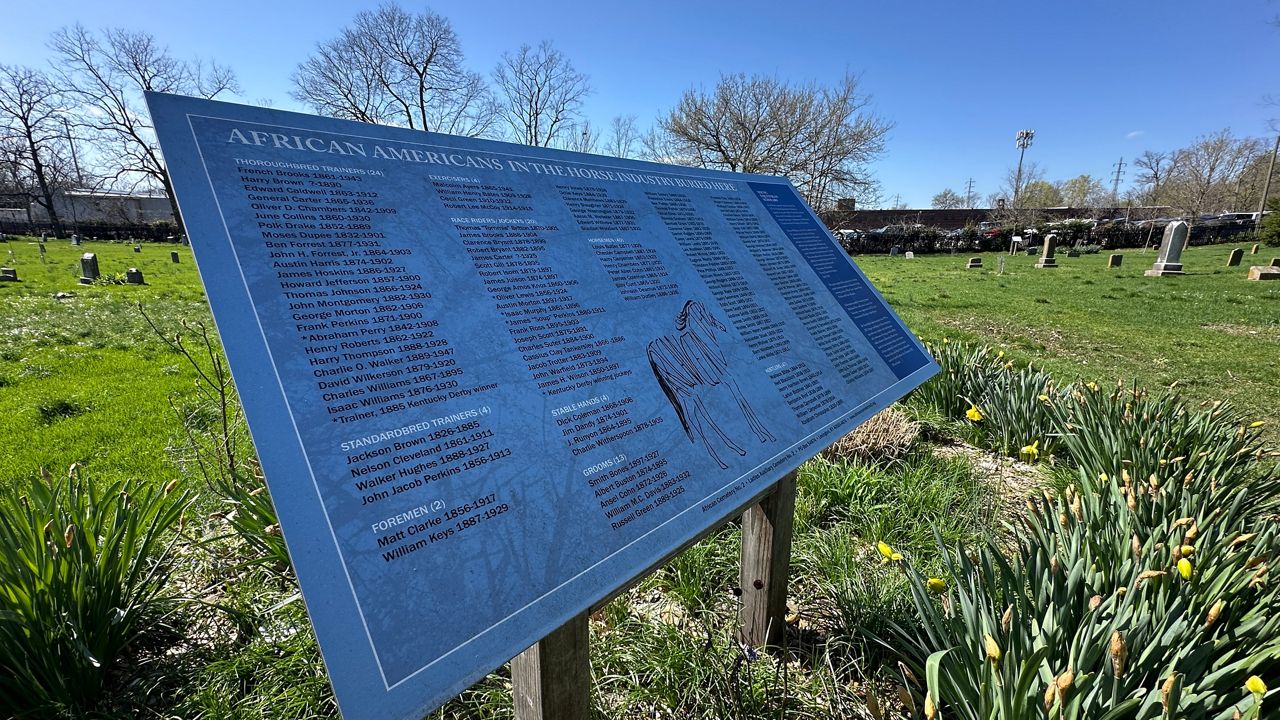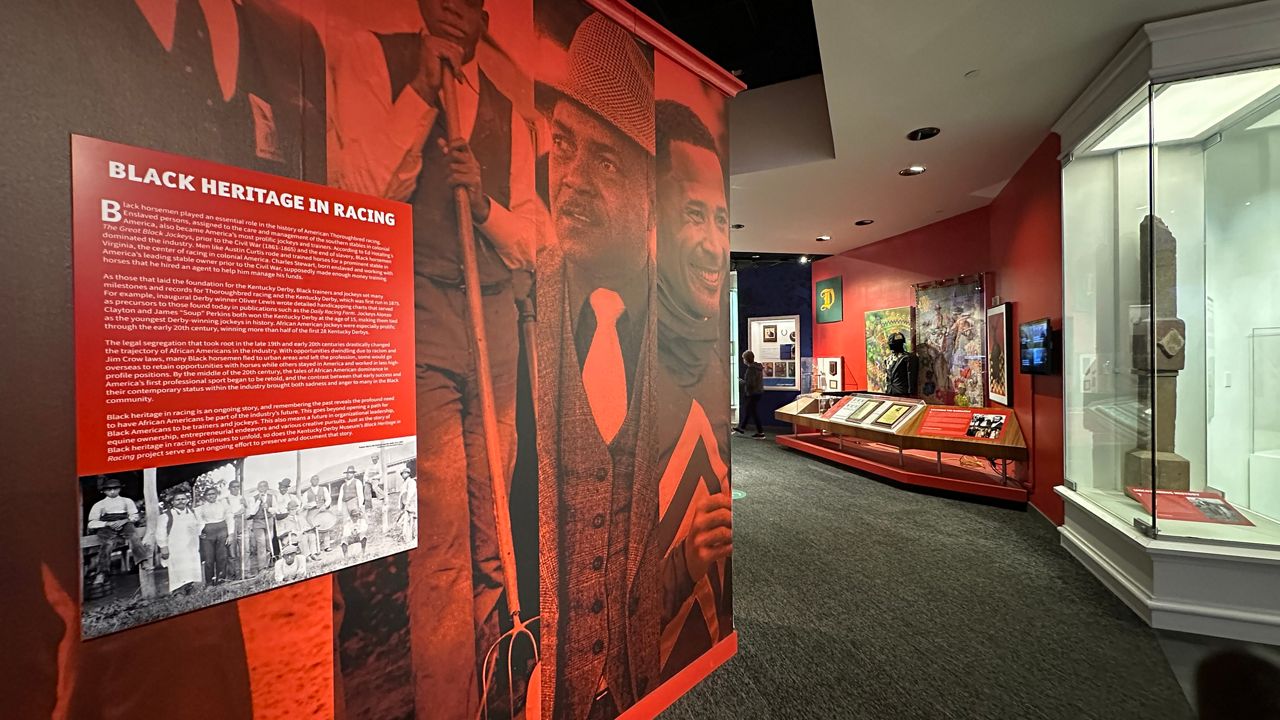LOUISVILLE, Ky. — The history of African Americans’ impact on horse racing is celebrated at the Kentucky Derby Museum and at a cemetery in Lexington, where almost 200 Black people who were involved in the industry are buried.
A version of the “Black Heritage in Racing” exhibit at the museum has been displayed since the early 1990s.
“We’ve been talking about this story for quite some time,” said Chris Goodlett, the museum’s curator. “The current version of the exhibit that we have opened in 2021.”
The exhibit was created to educate museum-goers on the history of African Americans’ impact on the Derby since the first Run for the Roses.
“Thirteen of the 15 jockeys that year were African American,” Goodlett said. “Of the first 28 runnings of the Kentucky Derby, over half of those are won by Black jockeys.”
It also spotlights the challenges Black people faced along the way, such as Jim Crow laws.
The museum is educating people on all of this outside of its doors through its “Black Heritage in Racing” traveling exhibit, which was updated this year through a grant.
“That exhibit continues to be very popular,” Goodlett said. “Just got back from South Carolina not too long ago, so we still actually send it out, get a lot of inquiries about it. We’re happy to update that exhibit and continue to get it out to communities across the country.”
The museum rents the traveling exhibit for free to organizations throughout the U.S. Contact the museum for details on booking the exhibit and any costs involved.
Yvonne Giles, an outreach and education coordinator at African Cemetery No. 2 in Lexington, also has a passion for educating people on the impact Black people have had on the Derby. She has dedicated years to researching the history of African Americans who have been laid to rest at the cemetery.

“One hundred eighty-six men so far and counting,” Giles said.
That’s how many Black men are buried at the cemetery who were involved in the horse racing industry.
“No other cemetery in the world that has made such an effort to focus on individuals in a particular industry who were instrumental in the foundation and the creation of that industry,” said Mark Coyne, the chair of African Cemetery No. 2 Inc.
Giles has contributed much of the research displayed on new archive signs that have been erected throughout the cemetery.
“It was an education and learning process, but it was also a labor of love because I got into it and I thought, ‘How much stuff can I put on these boards?’” Giles said.“It was an education and learning process, but it was also a labor of love because I got into it and I thought, ‘How much stuff can I put on these boards?’” Giles said.
Giles preserves and shares history.
“To get the horse bred, to foal, to breaking, to horse shoeing, to grooming, to exercising, to training, to riding,” Giles said. “We were the foundation, and minorities are still the foundation.”
Between the cemetery and the Kentucky Derby Museum, the hope is this history inspires Black people to join the industry through its many opportunities.




